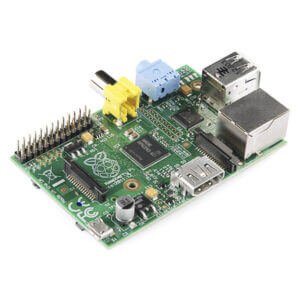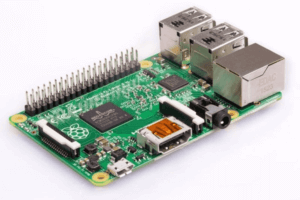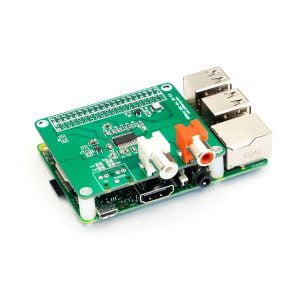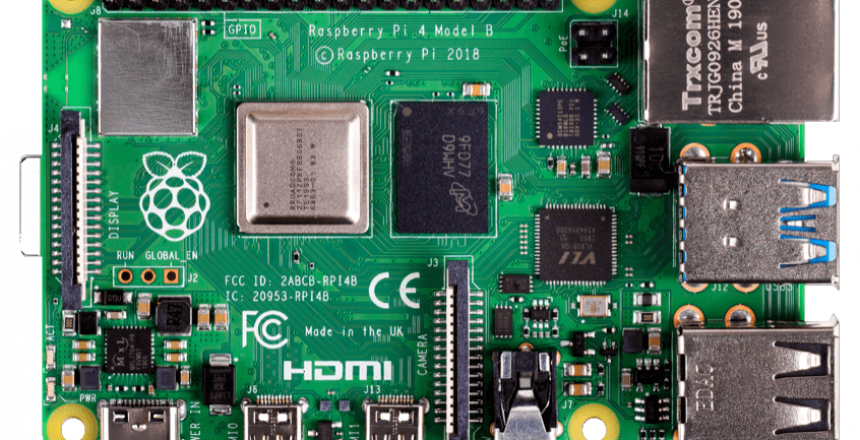
When I was a kid in secondary school back in 1984, my parents bought a ZX Spectrum. The school however, bought a room full of BBC Micro computers.
The BBC Micro was a marvel of it’s time, although my school never got to use a fraction of its capabilities. It was the computer for everyone, you could learn to program in BASIC, put a Pascal ROM in and program in Pascal. You could plug an entirely different processor in it and learn that.
It was built by Acorn in Cambridge and they sold over 1.7 million BBC Micros (so called because the BBC endorsed them) Acorn went on to create the ARM processor that powers every smartphone and most tablets.

Raspberry Pi 1 Model B
In 2006, concerned with the drop in computer science students at the University of Cambridge, that they needed a small computer to inspire more students to get into computers, so they created various prototypes of what would become the Raspberry Pi.
They teamed up with others and created the Raspberry Pi Foundation and created the Raspberry Pi 1 in 2011, which sold 2 million units in 2 years.
The idea was to make a small computer that a home user could connect to their TV. In the 1980s, that would have been analogue.
So when they released the Raspberry Pi 1 Model B in 2012, it came with both analogue and digital connections for just £35. The included 512MB RAM, an ethernet port to connect to the Internet and both CSI (Camera Serial Interface) and DSI (Display Serial Interface). In order to make the computer useful to hobbyists they incorporated a 24 pin GPIO port. The model A came later, with half the memory and no ethernet port for £25.

Raspberry Pi 2 Model B
The Raspberry Pi had been an outstanding success but by 2015, Broadcom had discontinued the processor and so the team needed to update it, so they released the Pi 2 with an ARM7 processor instead of an ARM6 processor and increased the memory to 1GB RAM.
Ditching the analogue port and moving the audio jack to the other side allowed them to add more GPIO ports and introduced the HAT ID bus. They also doubled the memory and the number of USB ports but kept the price the same.

HAT (Hardware Attached on Top)
Since the Raspberry Pi 2 was released, support for HATs extend the features of the Raspberry Pi in different ways. The Raspberry Pi was never designed to stack HATs, but some manufacturers allow up to 62 HATs to be attached to a single Raspberry Pi if each is powered individually.
There are also pHATs, sometimes called bonnets that are made for Pi Zero.
Raspberry Pi Zero (and Zero W/WH)
In 2015, the Pi Zero was released, a much smaller board that sacrificed some of the components and sold for £5. MagPi magazine gave it away on the front of it’s magazine.
Two years later the Pi Zero W was released with wireless and bluetooth connectivity for £10. The WH was later released with the header soldered on.
Raspberry Pi 3 Model B & B+
The Raspberry Pi 3 Model B introduced the 64 bit ARM processor to the Pi as well as wireless and bluetooth on board, it also switched from full sized SD card slot to micro SD like the Pi Zero.
The model B+ upgraded the processor speed and improved both the ethernet port to work with gigabit ethernet as well as the wireless supporting b/g/n/ac for the same £35.
Raspberry Pi 4 Model B
Introduced in 2019, the Raspberry Pi 4 has changed substantially over the earlier models, which makes this model desktop ready.
Introducing dual monitor support at 4K, 2 USB 3 ports and is powered by USB C. The processor is considerably upgraded from the Pi 3 and comes in 3 different capacities of RAM, 1GB for £35, 2GB for £45 (later reduced to £35) and 4GB for £55.

